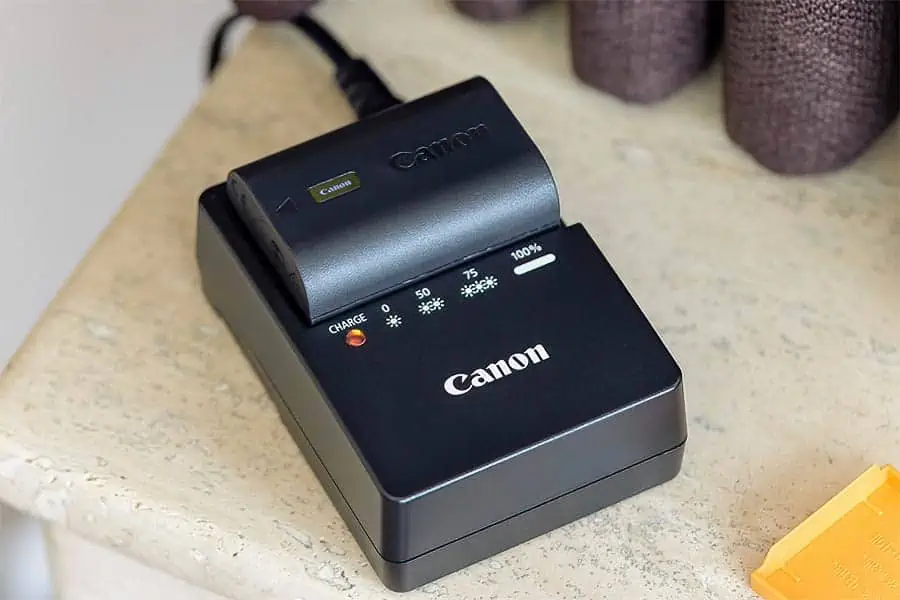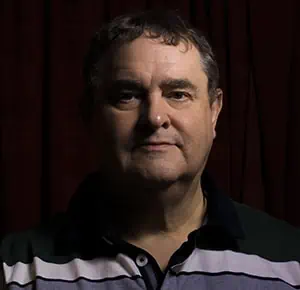DIY Video Studio is supported by its readers who use the affiliate links or ads on this site. As an Amazon Associate, I earn from qualifying purchases. Thank your support if you use any of the links.
Rechargeable Lithium-ion or Li-ion batteries are a popular choice in consumer and professional cameras. This is because, compared to other rechargeable batteries, they do not exhibit a memory effect, have low self-discharge, and provide high energy densities.
What this means in the real world is:
- You can recharge a Li-Ion battery even if it is not exhausted
- You don’t have to charge the batteries immediately before the shoot
- 1-3 lightweight Li-ion batteries are enough for many professional shoots
On commercial shoots, I frequently only need a couple of batteries when shooting full HD video. However, the power drain is higher when shooting 4K video.
I am a Canon shooter and since genuine Canon camera batteries are not cheap, I have done a lot of research about how to get the best performance and service life from a camera battery.
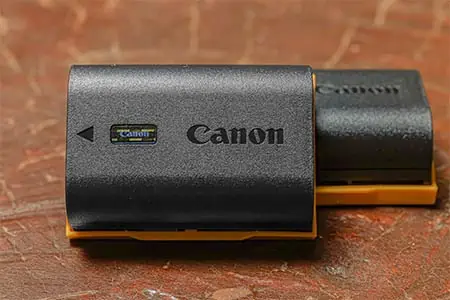
The first thing I needed to know was if I charge a Li-Ion camera battery overnight, is it safe or will the battery overcharge?
A Lithium-ion battery cannot be overcharged because the charger includes overcharge protection. Charging will automatically stop when the battery reaches 100% capacity. But if the battery is left charging, this can cause damage that will reduce the performance and service life of the battery.
How To Charge a Camera Battery
How you charge a camera battery might depend on whether the camera is a consumer-level camera or a camera aimed at photography enthusiasts and professionals.
Batteries for consumer-level cameras are often charged in the camera, although this is not always the case. However, DSLR and Mirrorless camera batteries are usually charged in an external battery charger. These are normally supplied with the camera. If your camera was not supplied with a battery charger or you have lost it, compatible battery chargers are available from third parties. They frequently use a USB power supply instead of a wall outlet transformer.
This makes the replacement charger lighter, cheaper, and portable, since you can use USB adapters, computers, and power banks as potential power sources.
Like consumer-level cameras, many DSLR and Mirrorless cameras allow charging of the battery inside the camera. This is done by using a USB-C cable to connect the camera to a USB power adapter, power bank, or computer USB port. Once connected, you can turn on the camera and let it charge.
If your camera was not supplied with a USB charging cable, third-party cables can be purchased separately. You can find them online or at most electronics stores. Note that in some cases, in-camera charging will only work if you are using the correct type of cable and a genuine battery from the camera manufacturer. This is the case with Canon R series cameras, you can read my article about charging the EOS R here.
Can You Leave a Battery in The Camera All the Time?
In principle, you can leave the battery in the camera, especially if you practice in-camera recharging. However, this assumes that you regularly use the camera. You should not leave the battery in the camera when not using it for weeks or months at a time.
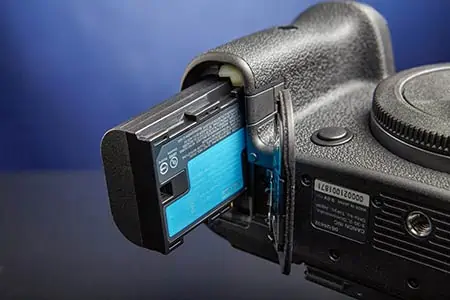
Lithium-Ion batteries, even when stored outside of a camera, will gradually lose some of their charge. However, when the battery is left in the camera, the battery will discharge at a much faster rate. This can lead to excessive discharge, causing the batteries to become exhausted over a prolonged period. The outcome is damage to the battery and a reduction in battery life.
Can You Keep Camera Batteries in the Charger or Charge them Overnight?
Ideally, you should remove the battery from the charger when the battery has completed recharging. However, leaving the battery in the charger for an extended length of time may result in some damage to the battery. When the battery is fully charged the overcharge protection built into the battery charger will cause the charger to stop charging the battery.
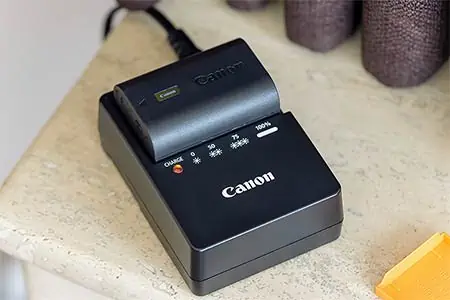
If everything stayed the same there would not be a problem, but the Li-Ion battery will begin to self-discharge.
At room temperature (21°C or 70°F) the rate of self-discharge is relatively low but if the camera battery is much warmer, as it would be at the end of charging, the self-discharge rate will be higher.
In the case of a Canon LP-E6NH battery, and other types will be similar, when the battery’s charge falls to 94% the battery charger will kick in and recharge the battery to full capacity. Although this ensures you have a fully charged battery for your photo or video shoot, keeping the battery at or close to 100% capacity can reduce battery performance and battery life. This is because when we keep the battery fully charged, the high voltage will stress the battery.
However, charging your camera battery overnight should not be too much of an issue. The battery won’t be in the charger long enough for multiple charging cycles to cause too much harm. It will only be of concern if you want to maximize battery life or if you are constantly charging the battery overnight. If this is the case, consider charging the battery before bedtime so you can remove the battery once charging is complete.
How Long Will a Camera Battery Last?
There is no definitive answer to this question since the lifetime of the battery will depend on the ambient conditions in which it is kept and how you use the battery.
As mentioned above, leaving the battery in a charger for longer than necessary will tend to degrade the battery. Keeping the camera battery at high temperatures will also accelerate self-discharge and have a detrimental effect. Letting the battery discharge until it is exhausted is another way of abusing the battery.
The expected lifetime of a Lithium-Ion battery and the time it can power your camera will be shortened by fully charging to 100% and exhausting the battery to 0% capacity.
If you need to store a camera battery charge it to between 40 and 60% of its capacity and store it outside of the camera and at around 15°C (60°F).
When using the battery, you can help maximize its useful life and performance by charging to less than 100% of capacity and swapping it for a fresh battery before it is exhausted. Also, avoid using the battery where the ambient temperature is very low or high. A temperature of about 21°C (70°F) is ideal.
However, doing everything you can to maximize the useful life of a Li-Ion battery does not correspond to the real-world experience of a professional photographer or videographer. The main objective is to grab all the required shots and usually do it on a tight schedule.
What I can tell you about my experience as a professional videographer is that the two Canon LP-E6N batteries I got with my EOS R mirrorless camera in November 2018 are now failing and require replacement. That’s four years of use. However, that does not consider COVID, illness, and a downturn in commercial video work. Realistically, I would have expected a couple of years of intensive use. But if I were an amateur photographer, four years of battery use seems reasonable.
One thing I have not mentioned is the number of battery charging cycles. Generally, a Li-Ion battery is good for around 1000 charging cycles. However, this is not necessarily taking the battery up from 0% to 100%. If the battery has been charged to 100%, put in the camera and used until the charge was 85%, and then charged again, that charge from 85% to 100% is one cycle. In the same way that charging from 0% to 100% is also one charging cycle. So, performing many small charges will significantly shorten the useable battery life, since the battery can only take around 1000 charging cycles.
Is It OK To Use Third-Party Camera Batteries?
As I mentioned earlier, a genuine Canon LP-E6NH battery can cost $120. If you are a professional hybrid photographer that’s just another business expense. But if photography is your hobby, $120 is a sizeable chunk of money. Considering third-party batteries can cost as little as $20, it’s not surprising they are tempting.
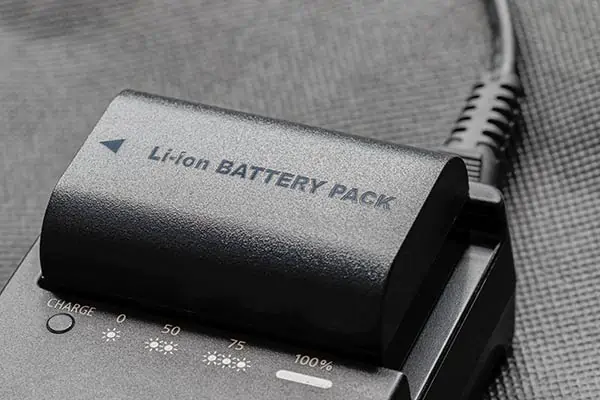
Some people will tell you never to use third-party camera batteries. However, no reputable battery maker will sell a poor-quality product that is likely to burst into flames or explode.
Looking at countless reviews of third-party camera batteries I cannot remember seeing any that mentioned a serious incident unless the battery had first been damaged or faulty in some way. Nonetheless, using third-party camera batteries will in most cases void your camera warranty if something goes wrong.
Whether you use third-party batteries is up to you. Like the camera manufacturers, I cannot recommend a product that may or may not be made to the same standards used by the camera manufacturer.
What I can say is that when I have tested various brands of third-party Li-Ion camera batteries, they have NOT performed as well as the camera manufacturers’ brand of batteries. Even where the third-party battery has claimed a higher capacity than the genuine Canon battery, the battery life has failed to impress.
Are Lithium-Ion Batteries a fire risk?
Lithium is a reactive metal, and it can burn and even explode. But modern lithium batteries are mostly safe to use, provided they have been properly manufactured.
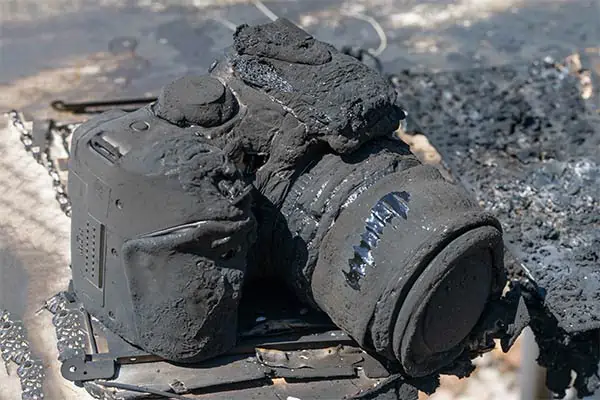
If you find that the battery seems unusually hot while charging, turn off the power immediately. Failure to do so may result in fire.
Also, be wary of any damage that might have been caused due to dropping a battery. If you can see obvious damage to the battery, you can be pretty sure you should not try using it again. However, internal damage may not be as obvious or visible, so be wary.
If you see any bulging of the battery after charging or use, that is a sure sign that the battery should be considered faulty.
To remain safe, regularly inspect your camera batteries and ensure the electrical contacts cannot be shorted.
As you can see in the image at the start of this section, fire damage to a camera does not look pretty and can be expensive in terms of lost property and lost lives. In London, England, the London Fire Brigade attends an average of 24 fires each week that have been started by chargers, batteries, and cables.
How I Use My Camera Batteries
Whether my professional shooting involves shooting a few hours of video or a lot of stills, I ensure I have at least three charged batteries in my kit bag.
I am more concerned about the length of time I can shoot using one battery than trying to squeeze as much longevity out of the battery. Therefore, I will charge my batteries the day before the shoot, so they are 100% charged.
However, if my priority is to get the longest service from each battery, I would charge my batteries to about 75% capacity. This is easy to do when using Canon LP-E6NH batteries since the rate at which the LED blinks on the LP-E6E charger gives an idea of how much the battery has charged. Two blinks a second would indicate the battery is at 50-74% charge, and three blinks a second means the battery is at 75% charge or more.
When out on the shoot, I will swap over batteries when the on-screen battery meter shows that the battery power is getting low. If I have time, I can go into the camera menu on my Canon EOS mirrorless camera and check the Battery Info. Which will give a better indication of the remaining power. I try to switch batteries before the red low battery warning appears on the screen.
On my return to the office, I’ll fully charge the batteries if I am out again the next day. If I am not going out again for a few days, I’ll charge the batteries to about 50% and store them safely in my kit bag at room temperature, which is about 21°C.
About the author: Tosh Lubek is a multi-award-winning broadcaster, writer, and video producer, with 40 years of experience in professional broadcasting and has been using Canon video and stills cameras since 2010. He has worked with radio and TV broadcasters, advertising agencies, and direct clients on a variety of projects including radio and television advertising, online video production, corporate videos, award ceremony motion graphics, and theme park sound design. Tosh has won numerous awards, including a Radio Academy Awards Gold Sony, a Gold, Silver, and Bronze World Medals in the New York Festivals International Advertising Awards. Since about 2007 he has been creating YouTube videos. Tosh has been a sponsor of the “video booth” at HashTag Business Events across the UK.
Recent Posts
You're Using the Canon RF 50mm f/1.8 WRONG! Here’s How to Fix It
If you’ve recently picked up the Canon RF 50mm f/1.8 STM—affectionately known as the Nifty Fifty—you might be confused by that strange switch on the side of the lens. It doesn’t say AF/MF...
Recently, I shot several customer testimonial videos in 4K for a client when the overheating warning on my Canon EOS R6 appeared. In fact, it appeared three times in five sessions during the day of...


